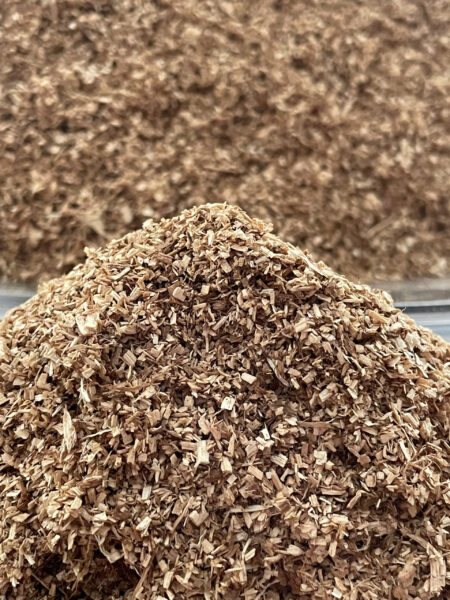Why Acacia Sawdust for Organic Mushroom Farming?

In the realm of organic mushroom farming, Acacia sawdust has emerged as a popular and effective substrate choice. Known for its affordability, sustainability, and excellent growth support, Acacia sawdust provides a robust foundation for cultivating high-quality mushrooms. This comprehensive guide will walk you through the benefits of Acacia sawdust, how to prepare it, and the best practices for using it in organic mushroom farming.
1. Sustainability and Environmental Benefits
Eco-Friendly Byproduct:
- Renewable Resource: Acacia sawdust is a byproduct of the Acacia wood industry, making it a sustainable choice. Acacia trees are fast-growing and renewable, which supports environmentally friendly farming practices.
- Waste Reduction: Utilizing Acacia sawdust helps in repurposing a waste product that would otherwise contribute to landfill. This practice aligns with the principles of organic farming by reducing environmental impact and supporting resource efficiency.
Biodegradable Properties:
- Natural Decomposition: Acacia sawdust is biodegradable, which means it decomposes naturally over time. This property reduces long-term waste and supports sustainable waste management practices, enhancing the overall eco-friendliness of your mushroom farm.
2. Cost-Effectiveness
Affordable Substrate:
- Low Cost: Acacia sawdust is generally more affordable than other substrates like straw or hardwood chips. Its status as a byproduct from woodworking means that it can be sourced at lower costs, making it a budget-friendly option for organic mushroom farmers.
- Bulk Purchasing: The availability of Acacia sawdust in bulk can further reduce costs. Purchasing in larger quantities often results in additional savings, contributing to a more economical farming operation.
Reduced Processing Costs:
- Simple Preparation: The preparation process for Acacia sawdust is relatively straightforward compared to other substrates, which may require more extensive treatments. This simplicity helps in keeping overall processing costs low.
3. Enhancing Mushroom Growth
Nutrient-Rich Substrate:
- Balanced Nutrients: Acacia sawdust provides a balanced nutrient profile that supports healthy mycelial growth. When supplemented with additional organic materials, it creates an ideal environment for mushroom cultivation.
- Effective Moisture Retention: The fine texture of Acacia sawdust aids in moisture retention, which is crucial for maintaining optimal conditions for mushroom growth. Proper moisture management helps in achieving better colonization and higher yields.
Improved Mushroom Quality:
- Consistent Growth: Mushrooms grown on Acacia sawdust often exhibit consistent size and quality. This uniformity is beneficial for marketability and can lead to higher profits.
- Enhanced Yield: By providing a stable and nutrient-rich environment, Acacia sawdust supports increased mushroom yields, making it a valuable substrate choice for organic farming.
Preparing Acacia Sawdust for Organic Mushroom Farming
1. Sourcing and Preparing the Sawdust
Selecting Quality Sawdust:
- Clean and Untreated: Choose Acacia sawdust that is clean and free from chemicals or contaminants. For organic farming, it is essential to use sawdust that has not been treated with pesticides or other chemicals.
- Consistent Texture: Ensure that the sawdust is of consistent texture and finely ground. This uniformity helps in achieving even colonization by the mushroom mycelium.
Preparation Process:
- Mixing with Supplements: Consider mixing Acacia sawdust with organic supplements such as wheat bran, soybean meal, or coffee grounds to enhance its nutrient profile. This mixture can improve the substrate’s effectiveness and support better mushroom growth.
- Moisture Adjustment: Before use, adjust the moisture content of the sawdust to around 60-65%. Proper moisture levels are crucial for optimal mushroom development.
2. Sterilization and Inoculation
Sterilization:
- Eliminating Contaminants: Sterilize the sawdust to eliminate any potential contaminants. Techniques such as steaming or pressure cooking are effective in ensuring a sterile substrate for mushroom cultivation.
- Maintaining Sterility: During the sterilization process, ensure that all equipment and containers are properly cleaned to prevent contamination.
Inoculation:
- Introducing Mycelium: Inoculate the sterilized Acacia sawdust with mushroom spawn or mycelium. Follow the recommended inoculation rates for the specific mushroom species you are cultivating.
- Even Distribution: Mix the mycelium thoroughly with the sawdust to ensure even distribution and colonization.
Best Practices for Using Acacia Sawdust
1. Managing Environmental Conditions
Temperature and Humidity:
- Optimal Temperature: Maintain the appropriate temperature for the mushroom species being cultivated. Most mushrooms thrive in a range of 55-75°F (13-24°C), but specific requirements may vary.
- Humidity Control: Ensure high humidity levels, typically between 80-90%, to support healthy mushroom growth. Adequate humidity is essential for proper fruiting and mushroom development.
Airflow and Ventilation:
- Good Air Circulation: Provide proper airflow to prevent the buildup of carbon dioxide and ensure healthy mushroom development. Effective ventilation supports even colonization and reduces the risk of contamination.
2. Monitoring and Maintenance
Regular Inspections:
- Check for Contamination: Regularly inspect the Acacia sawdust substrate for signs of contamination or mold. Early detection allows for prompt intervention and helps maintain a healthy growing environment.
- Adjust Conditions: Monitor environmental conditions and adjust as needed to maintain optimal growth conditions. Regular adjustments help ensure consistent mushroom quality and yield.
3. Harvesting and Post-Harvest Care
Timely Harvesting:
- Harvest at Peak: Harvest mushrooms at the optimal time to ensure the best quality and flavor. Timing can affect the size, texture, and market value of the mushrooms.
- Gentle Handling: Handle mushrooms carefully to avoid damage during harvest. Proper handling practices contribute to higher quality produce and reduced post-harvest losses.
Post-Harvest Management:
- Composting: After harvesting, consider composting the used Acacia sawdust substrate. This practice supports sustainable waste management and can be used to improve soil health.
Conclusion

Acacia sawdust is an excellent choice for organic mushroom farming, offering numerous benefits including sustainability, cost-effectiveness, and enhanced growth support. By following the guidelines for preparation, sterilization, and best practices, you can optimize your mushroom cultivation process and achieve successful results. Embrace Acacia sawdust for a more eco-friendly and efficient approach to organic mushroom farming.
For additional resources and information on organic mushroom cultivation, explore our other articles and guides.
Read more: https://vietnambestwood.com/general/sawdust-best-substrate-for-oyster/
